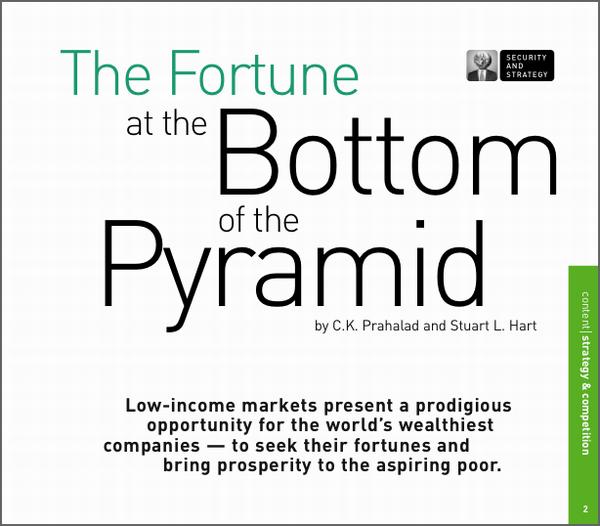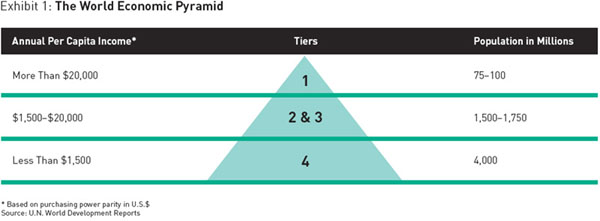A Call to Fortune

Although the connection between the purchasing power in the bottom of the economic pyramid and the growth of the global economy had largely been lost since Roosevelt's time, a number of examples arose to challenge the notion that being poor equated to being a poor customer. One of the most prominent being Muhammed Yunus's Grameen Bank, which pioneered the field of microfinance and demonstrated the poor were bankable, and on a large scale.
The global opportunity inherent in serving the world's poor would also emerge again three-quarters of a century after Roosevelt in professors CK Prahalad and Stuart Hart's 2002 article "The Fortune at the Bottom of the Pyramid"
The real source of market promise is not the wealthy few in the developing world, or even the emerging middle-income consumers: It is the billions of aspiring poor who are joining the market economy for the first time.
This is a time for MNCs to look at globalization strategies through a new lens of inclusive capitalism. For companies with the resources and persistence to compete at the bottom of the world economic pyramid, the prospective rewards include growth, profits, and incalculable contributions to humankind.

"The Fortune at the Bottom of the Pyramid" by CK Prahalad and Stuart L. Hart, strategy+business, issue26, first quarter 2002
Prahalad and Hart were advocating the idea that huge opportunities and economic growth could be created if global businesses began focusing on the poor as potential customers, that companies could generate profit by "selling to the poor and helping them improve their lives by producing and distributing products and services in culturally sensitive, environmentally sustainable, and economically profitable ways." Both Prahalad and Hart followed up this ground-breaking piece with additional articles and eventually each authored his own book, titled respectively, "The Fortune at the Bottom of the Pyramid " and "Capitalism at the Crossroads"
.
With this article in 2002, Bottom of the Pyramid moved from being solely a demographic term, to the name of global movement for business to strategically engage poverty and the worldwide "forgotten man".
- Criticisms and Developments - Criticisms and developments in the BoP



